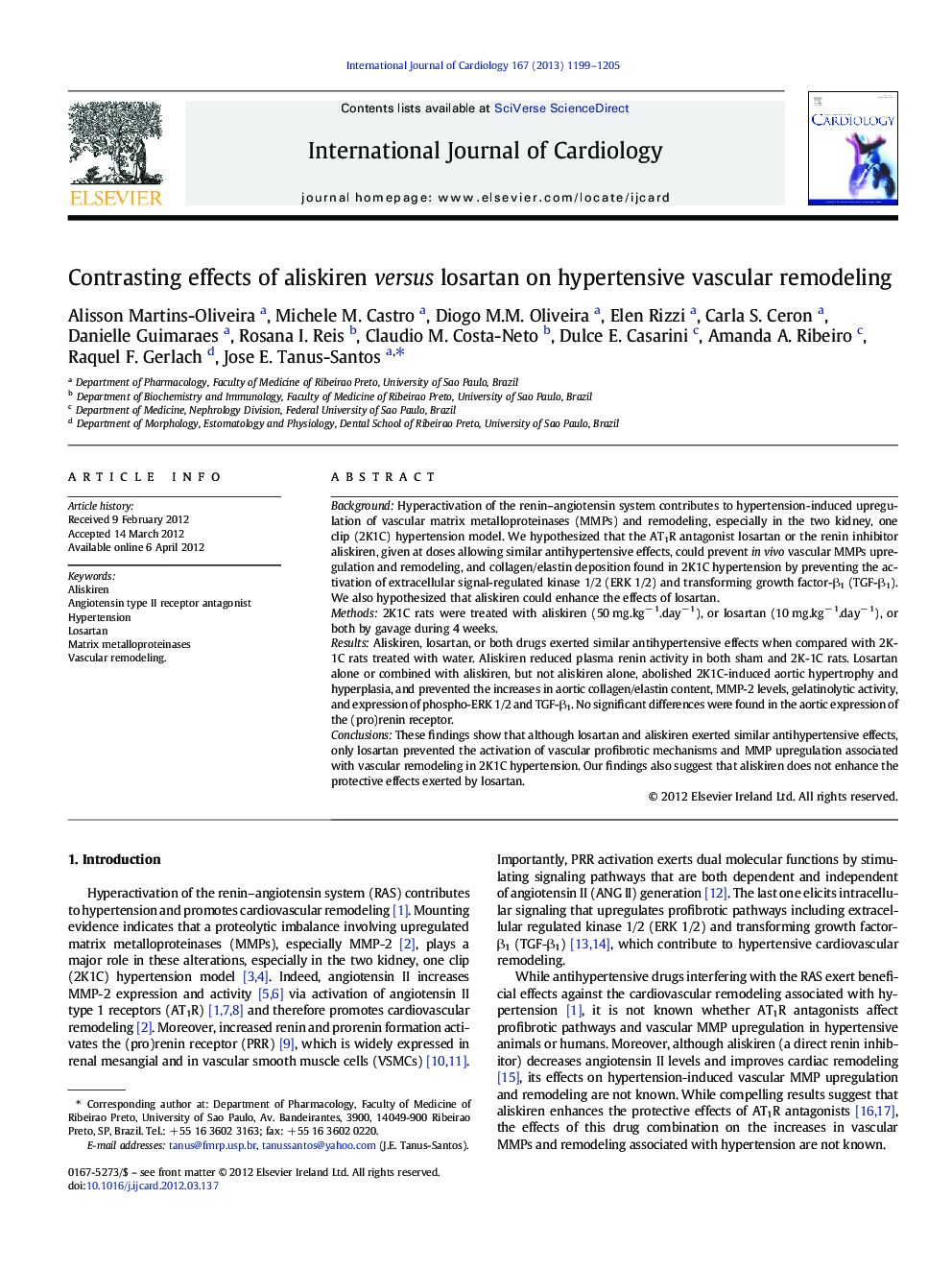| Article ID | Journal | Published Year | Pages | File Type |
|---|---|---|---|---|
| 5975465 | International Journal of Cardiology | 2013 | 7 Pages |
BackgroundHyperactivation of the renin-angiotensin system contributes to hypertension-induced upregulation of vascular matrix metalloproteinases (MMPs) and remodeling, especially in the two kidney, one clip (2K1C) hypertension model. We hypothesized that the AT1R antagonist losartan or the renin inhibitor aliskiren, given at doses allowing similar antihypertensive effects, could prevent in vivo vascular MMPs upregulation and remodeling, and collagen/elastin deposition found in 2K1C hypertension by preventing the activation of extracellular signal-regulated kinase 1/2 (ERK 1/2) and transforming growth factor-β1 (TGF-β1). We also hypothesized that aliskiren could enhance the effects of losartan.Methods2K1C rats were treated with aliskiren (50 mg.kgâ 1.dayâ 1), or losartan (10 mg.kgâ 1.dayâ 1), or both by gavage during 4 weeks.ResultsAliskiren, losartan, or both drugs exerted similar antihypertensive effects when compared with 2K-1C rats treated with water. Aliskiren reduced plasma renin activity in both sham and 2K-1C rats. Losartan alone or combined with aliskiren, but not aliskiren alone, abolished 2K1C-induced aortic hypertrophy and hyperplasia, and prevented the increases in aortic collagen/elastin content, MMP-2 levels, gelatinolytic activity, and expression of phospho-ERK 1/2 and TGF-β1. No significant differences were found in the aortic expression of the (pro)renin receptor.ConclusionsThese findings show that although losartan and aliskiren exerted similar antihypertensive effects, only losartan prevented the activation of vascular profibrotic mechanisms and MMP upregulation associated with vascular remodeling in 2K1C hypertension. Our findings also suggest that aliskiren does not enhance the protective effects exerted by losartan.
